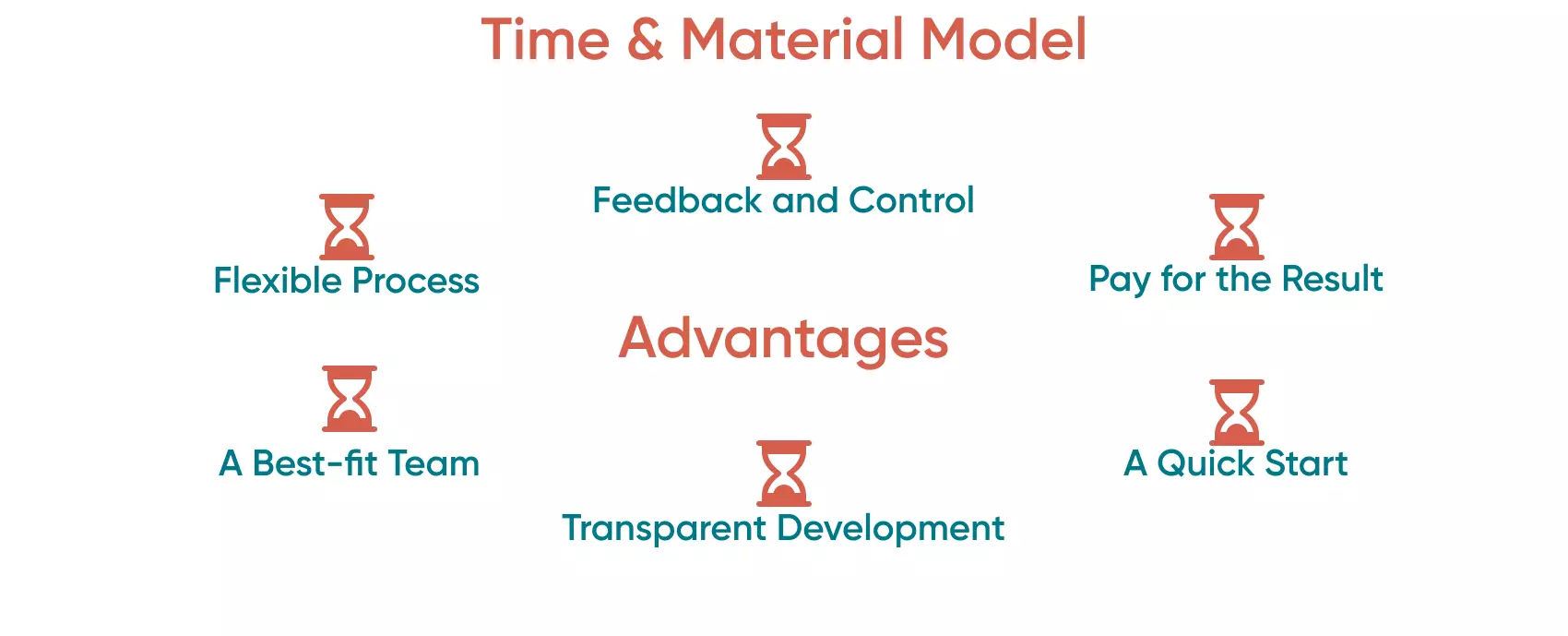Fixed Cost Vs Time and Materials in Software Development


What is the difference, and which is more suitable for your project?
Time is money. Everyone knows this saying. Entrepreneurs and businesses are inspired to spend their time wisely and get the maximum benefit from it within a specific period. The sphere does not matter — building a factory, playing your money on a stock exchange, or launching your business in a digital environment. Lost time is never again found, as Benjamin Franklin said.
From experience, we realise that our clients consider this aspect of business to be important when planning how to build software quickly and save their budget as much as possible. For this reason, there are different contract types, and clients need to know what contract they should choose for their specific project.
At Go Wombat, we have worked with various contract models like Fixed Price, Time and Material, and Dedicated Team. However, Time and Material is the one we work primarily with, and today this model is one of the most advantageous. When dealing with multiple cloud platforms or integrating APIs, a firm understanding of the possible project issues is vital. Therefore, we will compare the Fixed Price vs a Time and Material contract and explain what pricing model will be better for you throughout software development.
What Is A Fixed Price Contract?
A Fixed Price contract is a contract where the scope of work, specification, deadlines, and costs are agreed upon and fixed. The fixed cost model stipulates that the budget for the development is approved and remains unchanged. Also, the exact deadline for the project is agreed upon.
The software development company bears all risks for the timely execution of the project. On the one hand, the model can seem convenient for you as the client since you know exactly how much time the project development takes and its cost.
As a result, your project should be completed on time. Its quality may be lower since the development team need to do everything within the set deadline, which may impact the quality negatively. Furthermore, developers always plan for additional costs to avoid unexpected situations, so the development may be more expensive than it should be.
Fixed Price Particulars
A detailed technical task
It is crucial to foresee everything in a specification. It would be impossible to make some changes (add a new feature or choose another technology) without additional costs and time.
Additional payment for everything beyond
Suppose the customer decides that he or she needs something more during the development. In that case, the company and customer need to conclude an appendix to the preliminary agreement, and the customer will need to pay for everything beyond.
Increased cost
As we noted, the development company must implement the project strictly within the deadline and without additional fees under a Fixed Price contract. So all possible risks are included, which means that the cost is increasing.
When A Fixed Price Is Suitable
There are a few options when it makes sense to create the project under a Fixed Price model.

A Time And Material Contract
The Time and Materials contract means that a client pays for the time spent on the software development and tools used during the process. So the contract stipulates a fixed hourly rate for a developer or development team.
For example, at Go Wombat, we divide the development into sprints, and after each sprint, we discuss the result and get the customer's approval. Also, after the sprint, we provide the report about hours spent and results.
For the planning and control of task execution, as well as time and bug tracking, we use tracking tools like Jira and others. Clients also have access to monitor the project progress and control their expenses.
Contact Go Wombat to choose the most appropriate pricing model for your project!
Time And Material Model Particulars
Flexibility
When a client is working with a development company under the Time and Material pricing model, he or she can demand to add or remove any feature without additional agreements. The only thing a client needs to consider is that any task is a spent time which requires paying for.
Uncertain timeline and budget
It follows from the previous section. When the development process starts, neither the client nor the vendor knows the exact completion date and total cost because any additional task or change increases the timeline. In this scenario, both time and costs are affected.
Transparency
Live up-to-date communications allow clients to remain informed of all aspects of a project when created under a Time and Material contract. We hold regular meetings and discussions. At Go Wombat, we provide detailed reports about everything pertinent aspect during the specific period.
When Time And Material Contract Is Suitable
You should choose Time and Material model if:

The Pros and Cons of a Fixed Price Model
Undoubtedly, there are always good and bad points, and it is necessary to list all the advantages and drawbacks of both models.
Advantages

Fixed scope of work
It is required to agree on a scope of work with a development team at the very beginning, so you will know there won’t be any changes until the completion.
Exact cost
When you sign a contract, developers provide you with a detailed estimate for the development, so you agree upon the exact price. Under a Time and Material contract, it will be impossible to calculate the total amount you will need to pay for the project. So you can control all costs.
Clear Process
A Fixed Price contract means that you will have a complete roadmap showing how developers start developing your product to the final product delivery. In addition, you know when to expect the product completion so you can plan everything.
Drawbacks

Even though there are a few advantages of a Fixed Price contract, disadvantages prevail.
Lack of flexibility
Since a Fixed Price contract has a defined scope, the development is not flexible. You cannot change it, or if you really need to add something — you will need to pay additionally. The project may require new functionality over time, but developers won’t be able to change something since there is a fixed scope. As a result, your end product can compromise its quality.
More time-consuming spec writing
It is a challenging and time-consuming process to consider every detail in advance. Hence, our experts need enough time to think through the entire development process when they create a specification. If a client doesn’t want to provide all details of the project, the development team will need more time for it.
Fixed can become not fixed
If you decide to change something and you understand these changes are must-have ones, you will need to start negotiations with the development company again. This will slow down the process, resulting in an extended timeline.
Lack of Client Involvement
As a rule, a Fixed Price model is built without client involvement, and it is more of a drawback than an advantage. The matter is that developers do the project without regular meetings with the client, and even if it meets all technical requirements, it might be contrary to the client’s expectations in the end.
It doesn’t fit all projects
As noted above, small and straightforward projects or startups are workable under a Fixed Price project. However, if you need a robust product like an eCommerce website or an AI-based application, a Fixed Price will be your enemy rather than a friend.
Pros and Cons Of A Time and Material Model
Let’s take a look at some advantages and disadvantages of a Time and Material contract.
Advantages

Feedback and control
A Time and Material contract allows you to monitor the progress of the development and control the result of each stage, providing feedback. Interaction with a development team positively affects the project quality, and the client can get what he or she needs. Clients always stay up-to-date.
A quick start
A development team can start working on the project quickly since there is no need to discuss every nuance.
Pay for the result
You pay for hours spent on your project and see what you pay for. That is why this model is very convenient and provides much more flexibility.
Flexible development
The volumes and order of tasks can be changed if necessary, and adding new requirements to the project backlog is only required.
A best-fit team
The client can discuss the team size and its qualification level with a project manager.
Transparent development
The client is deeply involved in the process. He or she has access to all task management tools and labour accounting. The project is split into phases; clients can see functional software versions after each phase. This eliminates unexpected situations when the project is developed for a few months without any feedback from the client.
Drawbacks
Unpredictable cost
You should be prepared for expenses that go beyond your initial planned budget since it is challenging to estimate everything precisely without every detail of the project.
A timeline can be changed
The planned deadline can be extended as the client can make changes during the software creation. However, at Go Wombat, we rely on good management and proper task prioritisation not to break deadlines.
Need a detailed estimate and analysis for your future project? Contact Go Wombat!
Why Go Wombat Chooses A Time And Material Model

A Fixed Price model has many more drawbacks than a Time and Material model. As you can see, a Fixed Price model may seem less risky since you know the total cost of the project, but it doesn’t benefit you — it may even worsen the situation.
Under a Fixed Price model, all scope of work must be declared and contracted before the development starts, which may damage the final result and provide the client with a product that contradicts his or her vision unless it is an MVP or a small startup.
Go Wombat is a qualified team with over seven years of experience in software development, and we may assert that a Time and Material model is advantageous in most cases.
It is highly unlikely that a project will contain no changes. It is impossible to predict everything, so the Time and Material model allows both parties to adapt to any changes painlessly.
The Desired Result
A flexible and reactive project provides ample opportunity to make changes according to specific business circumstances. This allows for changes of almost any kind, depending on the initial analysis and risk assessment. Throughout the development, it is possible to select the most appropriate technology fitting the current requirements and ensuring the project's success.
Discovery Phase Can Be More Scrupulous
Our Business Analysts can make a detailed analysis of your future project. The discovery phase can take from one to six weeks, depending on the specifics of the project. The more accurate and complete the discovery phase, the better the outcome.
If you would like advice on your project, Go Wombat can provide a comprehensive Project Discovery Phase Analysis. Call us today to discover the details.
Right Prioritisation
On the one hand, under a Fixed Price model, you need to make your decision before the project starts. So you need to prioritise everything in the very beginning. However, based on our experience, we know priorities can change.
On the other hand, under a Time and Material model, we can prioritise everything adequately, and some features may become more suitable than those planned in the beginning. This accuracy and flexibility mean our team can also create a product adhering to the best quality standards.
Faster Process
The entire process can be set in motion whilst discussing all the details along the way. There is no need to calculate the cost of every feature and element as with a Fixed Price contract, and we can make a rough estimate and start developing without losing time. After each sprint, we refer to the "Scope of Work" and pay attention to each detail.
Cost-efficiency
Yes, a Time and Material model can be more cost-effective than a Fixed Price contract. This is because we don’t need to include potential risks. Instead, you pay for the actual work done so that we will spend our time wisely, creating ONLY what your project needs and avoiding mistakes and unnecessary functionality.
As the process is entirely transparent, you track the progress, and it limits the risks, so you see what the product is going to be.
Unlock Success with Premium Software Development
Contact us


Conclusion
A comparison between the Fixed Price model and the Time and Material model shows Time and Material has more benefits than a Fixed Price. However, it doesn’t mean that the Fixed Price model has no right to exist. For example, if you need an MVP to pitch to investors, a Fixed Price will be the best option when you need funding for further development.
A Time and Material will fit long-term and complex projects when you cannot plan and predict everything you need. A professional close working partnership throughout the process ensures we will create your software, considering all requirements. We are always open to clients' feedback and opinions since we want to make software that meets all the expectations of customers.
Contact Go Wombat, and let’s build your project together!
How can we help you ?





